The Complete Guide to YouTube Marketing for Small Business 2021
Unfortunately, social media marketers often forget about YouTube marketing. Some people see it as simply an online video platform, while others will acknowledge it as a social media network. Either way, there are so many opportunities for marketing your small business on YouTube, especially if your competition is not on the platform but your target audience is.
There are more than 2 billion users logged into YouTube each moth across the world and is one of the most widely used platforms among adults in the United States. Therefore, it really doesn’t matter much if you believe that YouTube is a social media network or not- it is the most popular platform.
Every minute, over 500 hours of video are uploaded to this platform, so its easier to talk about effective YouTube Marketing than it is to actually perform it. Here, you will find 10 steps to get you started with YouTube marketing.
10-Step Marketing Strategy for YouTube
Below are 10 steps that you need to keep in mind to build your marketing strategy for YouTube.
Create Business Channel
The very first step in the process is to create a business channel on YouTube if you don’t already have one.
You’ll want to start by opening a Brand Account on Google. While you can create your channel with your personal account, keep in mind that you will be the only one that will be able to access it and- depending on your settings- can connect your viewers with your personal email address.
On the other hand, a brand account allows multiple authorized users to be logged in at the same time. Even if you don’t need more than one account right now, it’s a good idea to keep your options open as your business grows. Additionally, a brand account will allow you to open/manage several YouTube channels.
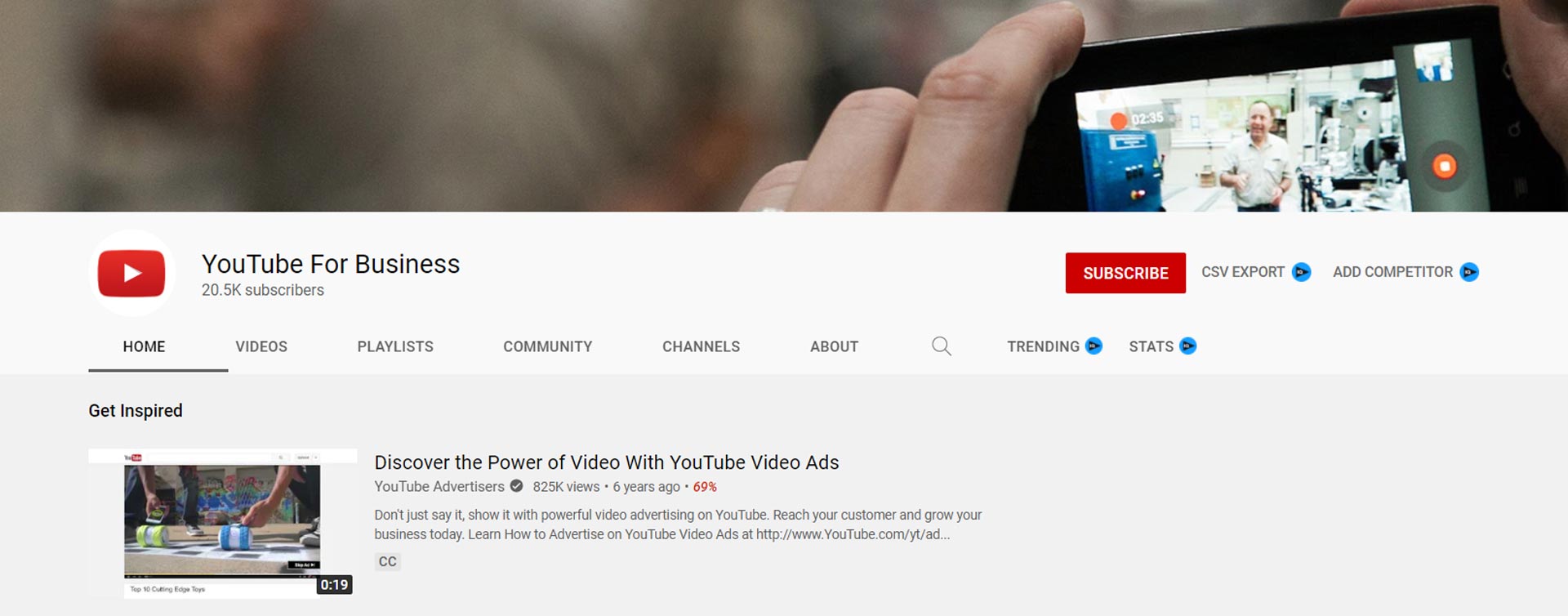
Learn Your Audience
If you are just getting started on YouTube, you’ll want to give yourself some time to learn more about YouTube demographics. This includes quantitative information regarding where visitors live, ages of your visitors, and viewing preferences of your visitors. If you find that your users are predominantly 18 to 25, its good to know that these viewers prefer short form content.
You might also consider gathering some qualitative data that shows what types of videos are most likely to be watched.
Your business channel on YouTube provides you with access to the analytics. If you’re already got one up and running, you can use this to monitor your personal YouTube audience. Pay attention to the demographics and average watch time.
If your viewers have left comments, take the time to read through them to find out what you can learn about your viewers. Another thing to do is visit the community tab. This is a great place to find the things you don’t know as well as ask question or create a poll.
Analyze your content and determine what your audience identifies with most and use that to brainstorm for new ideas. Create your content based on your current audience as well as the audience you plan to grow.
Research the Competitors
YouTube- like any other platform- is a competitive space. Take some time to analyze your competition to see how your channel measures up and find ways to improve. Here’s how:
Identify the Competition
First, you need to identify 3 to 5 competitors. You can do this by checking to see which companies rank for keywords associated with your brand. Then, record key metrics such as viewership stats and subscriber counts. You can use those as benchmarks for your own channel. See what titles, descriptions, and keywords they are using. Then read comments to see what viewers are saying.
Conduct SWOT Analysis
A SWOT analysis will help you identify: Strengths, Weaknesses, Opportunities, and Threats presented by each of your competitors. This is the best way to determine what is and what isn’t working.
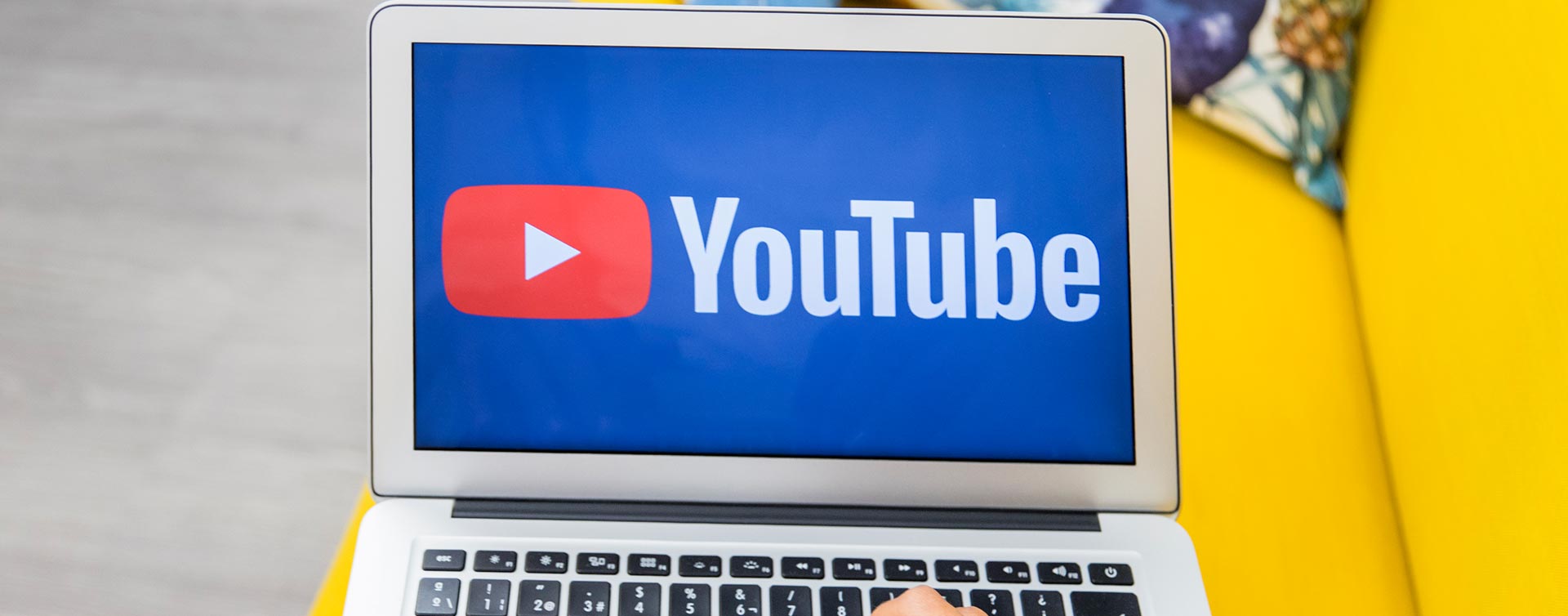
Learn from Favorite Channels
Take some time to look over your YouTube history and your subscriptions. As you do, pay attention to formats and techniques that hold your attention and keeps you coming back for more. Ask yourself how the popular channels are driving views, subscriptions, and engagement.
Look over the trending videos on YouTube. Even if they’re not relevant to your business or industry, you can still learn a lot.
Optimize Videos to Get Views
YouTube is a search engine for videos. This platform is owned by Google and therefore ranks videos based on a variety of factors including title, keywords, descriptions and more. The YouTube recommendation algorithm is what determines the majority of what people are watching.
Therefore, you must optimize your videos so that they stand out and are more likely to get more views. Here’s how:
Strong Title
Your title is one of the first things that YouTubes algorithm and your viewers will look at to evaluate your video. Be sure to include relevant keywords. Also, avoid clickbait. False advertising leads to decrease retention which leads to decreased rank. If the keywords that you’ve chosen do not match your topic, dig a bit deeper into your keyword search. Focus on your topic and content.
Your most important words need to be at the front. If you are making a series of videos, place the number at the end. YouTube allows you to use up to 70 characters. Ideally you should use 60 words or less.
Create a Unique Thumbnail
The thumbnail is the first thing a person sees- even before they see your title. most of the best performing videos on YouTube have custom thumbnails. If your thumbnail is custom, it is more likely to stand out. Another thing to do is ensure the image and title work well together if you are doing a video on how to show the result of before and after. This will increase anticipation and people will watch to find out the final result.
Finally, make sure that your thumbnail is high res. You do not want to use a grainy picture.
Write Keyword Rich descriptions
The first few lines of your description should offer a brief summary of the video topic. Make sure that you use the keywords that you have zoom down on. Avoid being spammy, right and sentences that are coherent and natural sounding.
YouTube shows approximately 300 characters, that is 3 lines, above the button that says show more. This is where you want to add context for your video, as well as links to your website as well as social channels. You may even include a link for people to subscribe to your newsletters, include a shortlink so they can auto-subscribe. If the video is long, you might wish to create a table of contents so that views can jump to the section they are most interested in.
Keep in mind that YouTube has a 5,000-character limit and a 15 hashtag limit.
Add cards, bumper ads, watermarks, and end screens
A card, bumper ad, watermark, and end screen is a clickable CTA that you can add to your videos to encourage interaction. They keep people on your channel and drive the actions that people take.
Remind viewers to like/share/subscribe
Most of the time, as a video is ending, the host calls on the viewers to like/share/subscribe- but why? Because it works. Asking your viewers to do these things never hurts. Sometimes, people need to be reminded- they don’t think of it automatically. Plus, this engagement will work well with the YouTube algorithm.
Upload & Schedule Videos
Now that we’ve discovered how to create and optimize videos for your YouTube channel, it’s time to start scheduling them to be published. YouTube has replaced traditional network television for most people between the ages of 18 and 24. However, this age group still has expectations that videos will be available on a set schedule that they can count on.
Take some time to look at your channel’s analytics to find out if there’s a certain day or time that seems to have a higher amount of viewership and/or engagement. This will tell you the best time to post to your channel. After all, you want to post when there are people on that can receive and share your message.
Once you’ve figured out that “sweet spot”, make it a point to post on a regular basis within this window of time. Scheduling tools can help you maintain your consistency. You can create videos and then schedule them to be posted on certain days/times. Some of these tools work across platforms and can post on everything all at once, so you don’t have to worry about anything- it’s truly automated.

Attract Followers by Optimizing Your Channel
You want to do whatever you can to make it easy for people to find you on YouTube, which means you must optimize your channel. Here’s how:
Complete Your Profile
Spend some time and effort into filling out the finishing touches on your YouTube profile:
Channel Description: You’ll want to make sure that you provide a keyword-rich overview of what people can expect when they subscribe to your channel. You may also wish to include links to your social accounts and website (if you have one).
Channel Icon: this is where you will put your brand logo if you have one.
Channel Art: this banner space will be the welcome mat to your channel for your visitors. it’s a good place to list your channel schedule, an upcoming product launch, and so much more. Additionally, you can add featured channels, which can be other channels that you own/run or related resources that your viewers might be interested in. This will add value to your page.
Add Social Media Links
The banner is a great place for you to add links to your website, social media channels, and even an auto-subscribe prompt. Place whatever is important to your company front and center so that people can see it.
Create Channel Trailer
A YouTube channel trailer is like a movie trailer- it provides people with a preview of what they can expect on your channel. When a visitor that is not subscribed lands on your page, the trailer automatically plays. Therefore, it’s best to assume that they are new to your page and your brand- give them just enough information to pique their interest so they will subscribe and engage with your page.
Organize Videos into Playlists
YouTube will automatically play a series of videos to keep viewers on your channel without being sent elsewhere. Don’t leave it up to YouTube to curate this list.
Instead, take the time to design a cohesive, logical playlist. Organize tutorials from beginner to advanced. Take some time to think about the next step a viewer would want to take after viewing a particular video on your page.
You can create a playlist using your own videos or you can link with partner videos. If you are networking with other YouTube creators, see if they will add your videos to their playlists if you’re willing to add theirs to yours.
Add Captions/Translations
Did you know that only 33% of the most popular videos on YouTube are in English- and over 60% of a channel’s views originate outside of the creator’s home country? You can use YouTube’s built-in translation tools to expand the reach of your videos.
Start with adding captions to your videos, which makes them more accessible to those who are non-native speakers, those with hearing impairment, and people watching with the sound turned off. YouTube does provide auto-captions, but the results are not always the best. You may want to proofread them and make edits so that they make sense.
Check YouTube analytics to find the top locations and top languages that people are choosing to watch your videos in. From that information, you can translate your title, description, and transcript to provide that group with subtitles. You can do this yourself or you can outsource it to a freelancer.
After all, if you’ve put in the time and effort to create a video, it’s worth the extra to have your transcript translated to make it more accessible to those who are most interested in your videos. Don’t let your viewers think that you don’t value them or that you cut corners in your business.
Use YouTube Advertising
If you want to expand your reach beyond your channel, YouTube advertising could be your golden ticket. Think about the audience that you believe might be interested in what you have to offer and create an ad to reach out to those individuals.
If you want to promote a new product, a particular event, or your brand in general, YouTube advertising is good for that as well. Studies show that people are more likely to pay attention to an online video ad over a TV ad. There are four categories of YouTube ads:
- Skippable in-stream
- Non-skippable in-stream
- Video discovery (in-display) ads
- Non-video ads (overlays/banners)

Work with an Influencer
One way to reach a wider audience on YouTube (and any other social media for that matter) is to work with an influencer. One poll indicated that 60% of subscribers on YouTube are likely to follow advice from their favorite creator as opposed to their favorite TV/movie star.
This is because it’s easier to relate to a creator than a star. When you from the right partnership, you can transfer that trust to your brand.
When you form these partnerships, you need to step back and let them do all of the talking. The more you try to control the situation, the more you’ll have an effect on the brand of the influencer. This makes their efforts less honest, and their followers will be able to see that.
Analyze & Adjust as Needed
Once you have your YouTube channel up and running, you want to start measuring your successes and failures. After all, you will be doing lots of testing and experimenting before you get YouTube marketing completely right. There are so many things to do and so many ways to do them- not everything will work for everyone. There’s nothing wrong with that, as long as you take the lesson and learn it.
YouTube Analytics can help you see how your channel is growing and hour your videos are performing. When you post a new video, pay attention to the following:
- Changes in subscriber count
- New/changes in audience demographics
- Where videos are being played
- Where traffic is coming from
- What devices are being used for visiting your channel
The information that you discover should help you decide what your next steps should be. While it’s true that quantitative measures are important, you can’t overlook the qualitative ones.
Conclusion
Unfortunately, YouTube is often overlooked as an option for marketing a brand- but there are so many ways that you can grow your brand through this social media channel. Hopefully these 10 tips can help you navigate the uncertain waters of YouTube marketing.
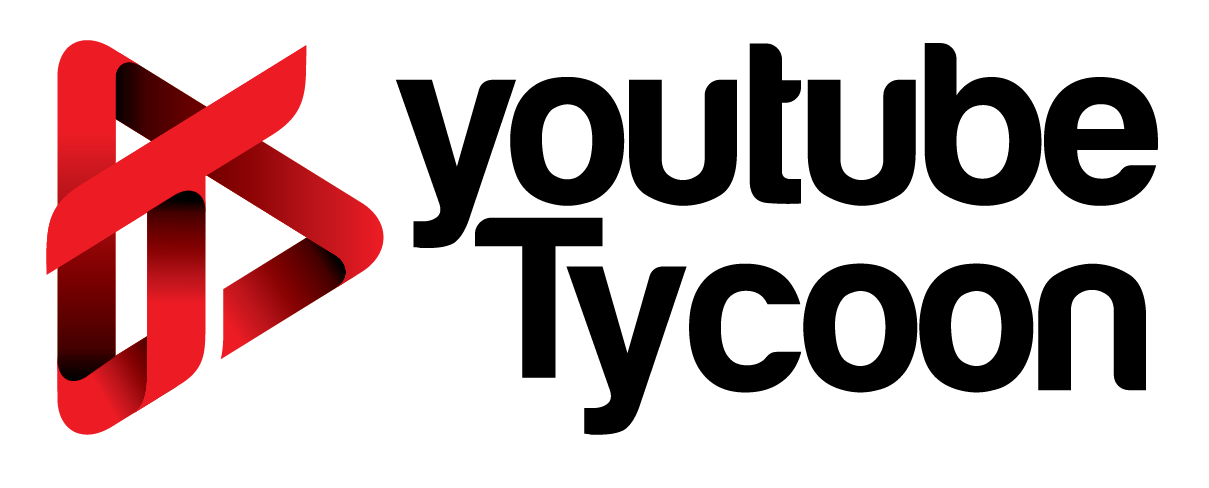
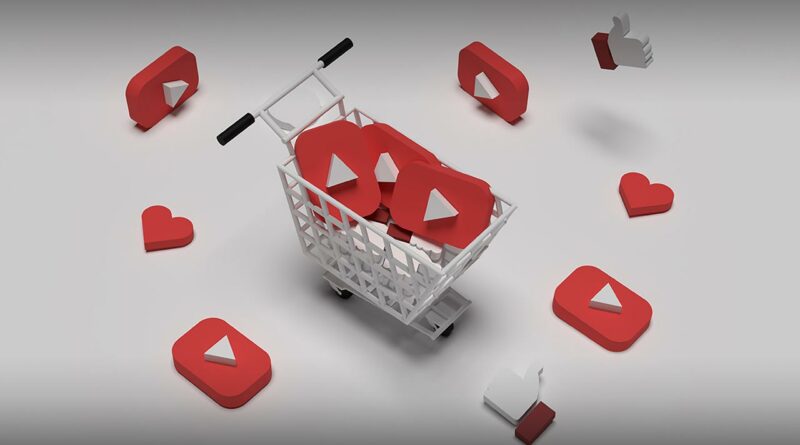

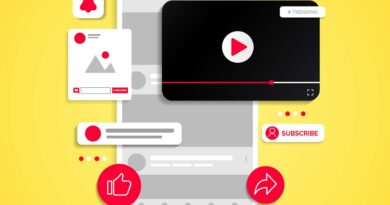
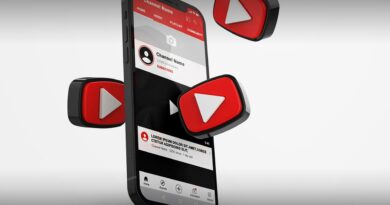
Very efficiently written post. It will be supportive to everyone who utilizes it, as well as myself. Keep up the good work – can’t wait to read more posts.
There is nothing at all unsuitable with both using the same videos used on sharing sites for your personal sites, and in reality you actually ought to do that.